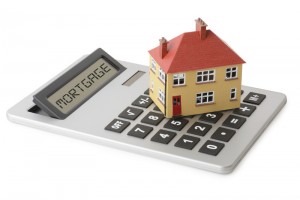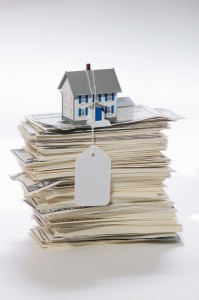And we have a trifecta! All three of the home sales indicators for December have now come in positive, although the latest, pending sales, did so leaving claw marks on the scales. The National Association of Realtors® (NAR) said its Pending Home Sales Index (PHSI) eked out a 0.1 percent advance over November. The median forecast called for a 0.8 percent increase. Existing home sales and new home sales, both reported within the last week, had month-over-month increases in the double digits.
The PHSI, a forward looking indicator based on contract signings, registered 06.8 for the month, 4.2 percent higher than a year ago. The index has increased year-over-year for 16 straight months. At the same time, NAR revised its original index for November down from 106.9 to 106.7.
The December gain, tiny as it was, was only possible because the Northeast region experienced a bit of a contract signing boomlet, increasing 6.1 percent to 97.8. The index for the region is now 15.3 percent higher than the previous December. The region’s gain offset losses in the other three regions.
The Midwest saw a decline of 1.1 percent to 103.6, remaining up 3.6 percent year over year. Pending home sales in the South declined 0.5 percent to an index of 119.3 but are 1.0 percent higher than in December 2014. The index in the West decreased 2.1 percent in December to 97.5, maintaining a 3.4 percent annual edge.
Laurence Yun, NAR chief economist, says contract activity closed out the year on stable footing but lost some momentum, except for in the Northeast. “Warmer than average weather and more favorable inventory conditions compared to other parts of the country encouraged more households in the Northeast to make the decision to buy last month,” he said. “Overall, while sustained job creation is spurring more activity compared to a year ago, the ability to find available homes in affordable price ranges is difficult for buyers in many job creating areas. With homebuilding still grossly inadequate, steady price appreciation and tight supply conditions aren’t going away any time soon.”
According to Yun, although healthy labor market conditions will persuade more households to buy, other factors could serve to curtain overall demand in the next few months. He cited the large post-New Year losses in the stock market and the slowing of manufacturing activity in some local areas, especially those reliant on energy production. These could create enough economic uncertainty or even a financial inability for some to buy a home.
“The silver lining from the market turmoil in recent weeks is the fact that mortgage rates have slightly declined,” says Yun. “Buyers looking to close on a home before the spring buying season begins may be rewarded with a mortgage rate at or below 4 percent.”
NAR forecasts that existing-homes sales this year will be around 5.34 million, an increase of 1.5 percent from 2015. The national median existing-home price for all of this year is expected to increase between 4 and 5 percent. In 2015, existing-home sales increased 6.5 percent and prices rose 6.8 percent.
Rents – which have far outpaced wages in recent years – are expected to slightly slow to 3.3 percent growth in 2016 from 3.6 percent a year ago. Multifamily housing starts are expected to reach 420,000 units this year, the highest level since 1987.










